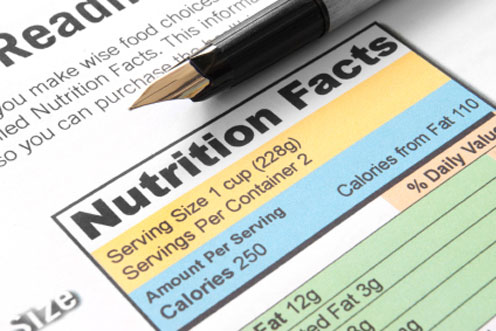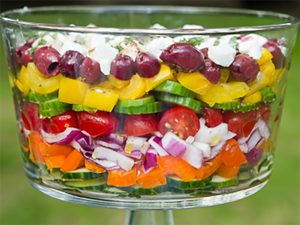Five Ways Nutrition Fact Labels Lie

But the government regulates the information on the label, right? I mean, they can’t put it on there if it isn’t true?
There are things you need to know about what’s missing or misleading on a food label that could be affecting your health. Knowing what to look for and carefully comparing products that look similar, but are very different, will stand you in good stead.
- The serving size. Be sure you know the serving size is not the recommended amount that you should eat, but that it is a reference number upon which everything else rests.
- Percentage of Daily Value. The number chosen is for a 2000 calorie per-day diet which represents an average. And you are not average. So much can affect how many calories are right for you. Be sure that you know how many calories are right for you, as your number could be higher or lower.
- The word ‘colour’ Currently, in Canada, a label only needs to say the word ‘colour’ to disclose any number of ingredients that may be affecting your health. Certain artificial food colours have shown to cause hyperactive behaviour in some children, and allergic reactions as well as asthma. If it’s in there, you have a right to know which one it is so you can track reactions and be sure to avoid the ingredient. This stipulation is currently under review, but even if it is overturned, don’t expect the makers of packages to be asked to move quickly to change, it will likely be voluntary for a while. If you or someone in your family has allergies and or hyperactivity issues, it may be best to avoid anything containing colour.
- Slippery sodium. Health Canada estimates that 88% of our salt intake comes from packaged foods, so simply putting away the salt shaker isn’t the solution. Packages contain a “Percentage Daily Value” amount that is too high so it obscures the facts. Most health-care professionals recommend around 1500 mg per day as a maximum. Nutrition labels allow 2400 mg per day (because the Canadian average is around 3300). Be sure that this is a percentage that you stay well below. There are ways to reduce your sodium, but in the meantime, read every package, add up your sources for a day and do not go above 75% of the “% DV”.
- There are only 13 important nutrients that must be listed on a label. But of course, a healthy diet contains much, much more. If a piece of fruit listed all of its nutrients, the label would wrap around it many times over. Most of your nutrients will actually be coming from whole foods… Be sure that this is also where most of your calories come from and you will be right on track.












